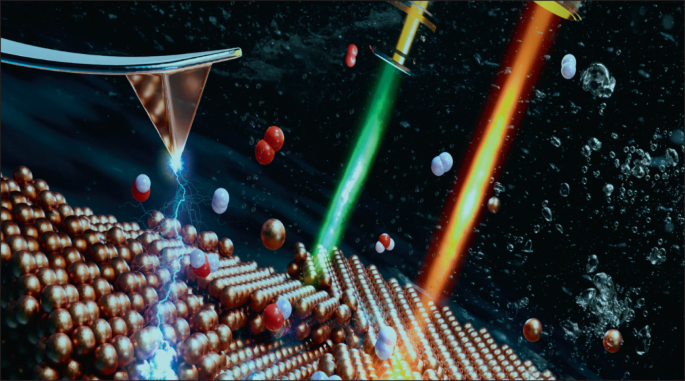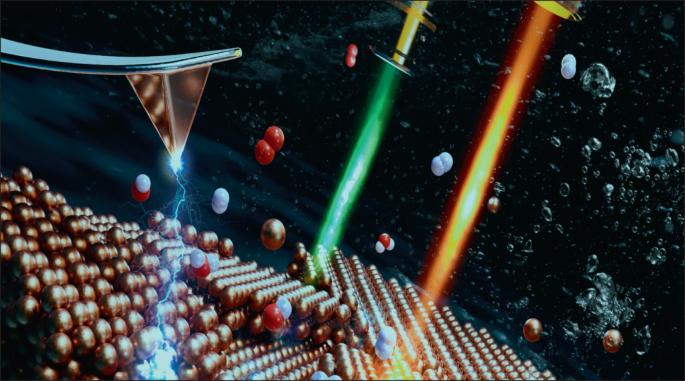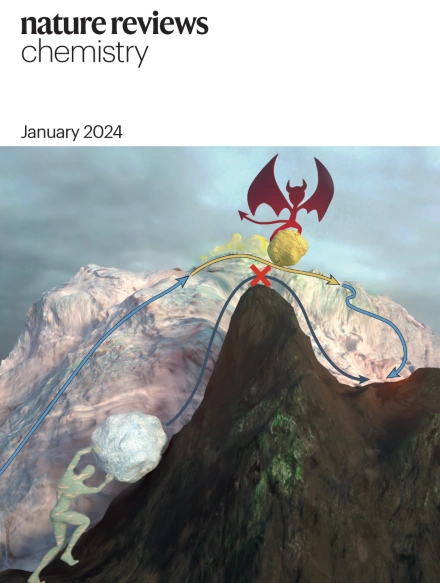电化学界面互补探针
IF 38.1
1区 化学
Q1 CHEMISTRY, MULTIDISCIPLINARY
引用次数: 0
摘要
电化学能量转换和存储设备的功能依赖于固体和流体之间的动态交界处:电化学界面(EI)。目前已开发出许多实验技术来探测电化学界面,但这些技术只能提供部分图像。要全面了解机理,需要将多种探针先后或同时结合起来。然而,这种组合会带来重要的技术和理论挑战。在本综述中,我们将重点介绍互补的光电探针和建模,以解决不同时间尺度和空间尺度上的电离层问题--包括绘制运行过程中的表面重构、反应物和反应调制器。我们将讨论如何将这些探针与理论紧密结合,以促进 EI 的预测性设计。本文章由计算机程序翻译,如有差异,请以英文原文为准。


Complementary probes for the electrochemical interface
The functions of electrochemical energy conversion and storage devices rely on the dynamic junction between a solid and a fluid: the electrochemical interface (EI). Many experimental techniques have been developed to probe the EI, but they provide only a partial picture. Building a full mechanistic understanding requires combining multiple probes, either successively or simultaneously. However, such combinations lead to important technical and theoretical challenges. In this Review, we focus on complementary optoelectronic probes and modelling to address the EI across different timescales and spatial scales — including mapping surface reconstruction, reactants and reaction modulators during operation. We discuss how combining these probes can facilitate a predictive design of the EI when closely integrated with theory. Electrochemical devices enable clean energy technologies such as hydrogen cells, batteries and solar fuels. Their design is hindered by incomplete information about the electrochemical interface during operation. Complementary optoelectronic probes offer a path to improved mechanistic insights into such interfaces.
求助全文
通过发布文献求助,成功后即可免费获取论文全文。
去求助
来源期刊

Nature reviews. Chemistry
Chemical Engineering-General Chemical Engineering
CiteScore
52.80
自引率
0.80%
发文量
88
期刊介绍:
Nature Reviews Chemistry is an online-only journal that publishes Reviews, Perspectives, and Comments on various disciplines within chemistry. The Reviews aim to offer balanced and objective analyses of selected topics, providing clear descriptions of relevant scientific literature. The content is designed to be accessible to recent graduates in any chemistry-related discipline while also offering insights for principal investigators and industry-based research scientists. Additionally, Reviews should provide the authors' perspectives on future directions and opinions regarding the major challenges faced by researchers in the field.
 求助内容:
求助内容: 应助结果提醒方式:
应助结果提醒方式:


